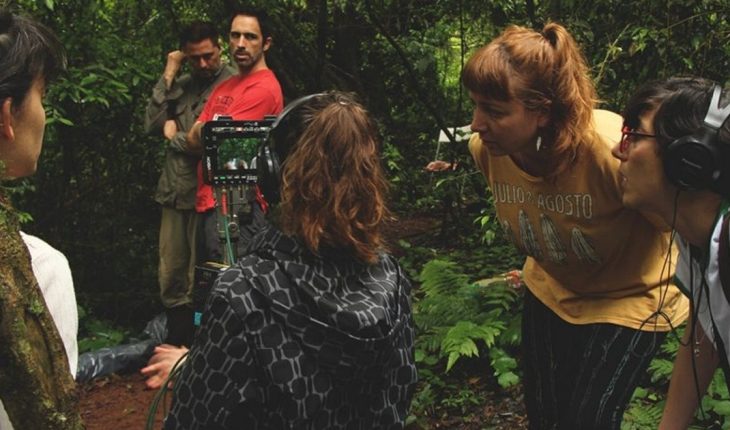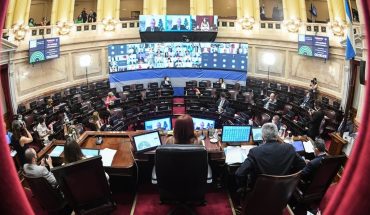Women have long been the protagonists of horror cinema. The problem is how: killed by criminal sadists, victims of creatures or alien invasions; for this, they were built as passive, weak, and even thought of since hypersexualization and cosification. To get an idea: actresses like Jamie Lee Curtis or Janet Leigh are known as “scream queens,” a term Debbie Rochon defines for GC Magazine as women who “just had to look cute and scream a lot until the film’s hero managed to save them.” This is enhanced in subgenres like slasher, centered on some psychopath who murders teenagers. Luckily this is already changing. It’s just that the dominant look in cinema is the masculine one. Theotic and film teacher, Laura Mulvey, researched the subject and assured that women are considered an object in Hollywood. He analyzed it in Visual Pleasure and Narrative Cinema (1975), where he indicates that male domination extends from the camera he records, the audience he observes and the characters on screen. However, cinema, as a tool of social communication, reflects the changes that occur at the social and cultural level. Terror doesn’t stay out. That’s why the role of women in the films evolved, and for that it was key the change in the gaze behind the screen that was enhanced in the era of #MeToo.
“Nice stay”
It’s not new that there are women who direct horror stories. Among the first references we can find Alice Guy-Blaché, founder of fictional cinema, followed by Ida Lupino or Stephanie Rothman. But what’s interesting to look at is how they’re redefining gender from new perspectives: women who talk to women. This is something that is already happening: they occupy 53% of average screen time and 47% of the dialogues, according to Google and Geena Davis Institute, while 49% of viewers are women. To put these numbers into dimension we can consider the Sitges Film Festival, the world’s first fantastic film gathering, where this year work by Natalie Erika James, Marin Ireland, Suliane Brahim and more stood out. In the last time we saw premieres like “Babadook”, where Jennifer Kent puts on the table the fears of motherhood, or what Antonia Bird does in “Ravenous” and toxic masculinities. Desirée de Fez, a journalist and film critic, discusses the theme in the book “The Queen of Scream”, where he puts in check the concept to talk about how cinema allows to link the real fears of women. In this way it assumes “The Seed of the Devil” as the fear of pregnancy or “Body horror” as the fear of aging.
“Nice stay”
While it is certainly a step forward from other genders, much remains to be done to achieve equality and visibility into women’s work. In fact, what is going on in our country? according to the report of the Management of Control of the National Institute of Film and Audiovisual Arts in 2018, of the 238 Argentine films that were released only 41 were directed by women. In the field of terror in particular, we can name figures such as Narciso Ibañez Menta or Andy Muschietti; But how many directors do you know? What is the space they have in the industry? For all this it is important to think of terror from a gender perspective. In this note, the word of three Argentine directors to learn about their stories, their projects, their thoughts and more. LAURA SANCHEZ ACOSTA
Laura Sanchez Acosta
Terror as a connection to our roots, to our culture. As a place between the ominous and the sinister. That’s what Laura Sánchez Acosta proposes in her cinema, which goes back to her personal and family life story. “I’ve always liked movies and storytelling,” says Laura. Originally from Concordia, it was her mother who encouraged her to start her career in Audiovisual Arts at the age of 17 at the National University of La Plata. There he met fellows who also liked horror, fantasy and sci-fi movies, and began to create juntes. A few years later she joined the production team of “Daemonium”, the film directed by Pablo Pares, which represented for her a before and after. “It was a project that really reinforced and marked my passion for making films of this type of genre. I always liked terror, I come from an area of Argentina populated with legends of monsters, witches, ghosts and as much magical thing as you can imagine, so it was very natural to lean to that side. My stories are born of these legends, I was born, raised and trained as an artist within that fantastic world born of the mixture of Guarani, charrúa and Creole culture of the region, and it is part of my goal to preserve them, to be known, thatand count each other,” he confesses. Terror takes over from the culture of the area, according to it, where space, the smell of the earth, the climate, the sopor, the heat, the heaviness and the same internal demons of the characters are a whole that build terror in an area as fantastic as the Argentine Mesopotamia. For this reason, he confesses that among his greatest references are Latin American filmmakers: “Understanding gender at our root I think is one of the pillars that motivate me the most to continue making cinema”, he says and continues: “Terror, precisely the Gothic that is what interests me most, since its origins is a tool of denunciation, a medium where the true demons of society are reflected in a specific social/historical period”.
“I was born, raised and trained as an artist within a fantastic world born of the mix of Guarani, charrúa and Creole culture of the region, and it is part of my goal to preserve them,” he confesses.
As she assesses, globally as a national, women are the minority in film direction, but we are increasingly. What happens in indie horror movies? “As the niche he knew he was and how cute he grew, he taught me that we do this among all, and there is a great spirit of friendship and collective claw to carry out all the projects,” he says. As a feminist, she seeks to become aware of the message shown in the films: “We are not many women filmmakers in horror films, but there are many more than we did a while ago. And that’s thanks to the first ones who ventured into this world, showing us the ones we follow that it’s possible to do so. I always advise watching independent horror cinema directed by women, in my experience and personal taste, the stories have a different and fresh look, which is rarely repeated”, expresses and follows: “The terror that a woman experiences today is very different from that experienced by a man, they provide fresh looks about a genre based mainly on cliché”. As a thesis on the faculty he presented the film “Relicto”, which follows the story of Oscar and his daughter Tamara, who travel to Entre Ríos as part of a psychological treatment. However, far from finding calm in the bush, the young woman becomes obsessed with a mysterious and dark mythological creature. “It’s almost 100% improvised actorly, and the scenes are shot in sequence shots to two cameras and unique shots. It was filmed in a total of 5 days with a team of 17 people, and was our first approach to a fantastic Gothic with dyes from the Argentine coast,” he explains.
After this project he presented “La Solapa”, the short film and feature film in development based on a legend of the Argentine coast, which defines as a kind of “Man of la Bolsa” but woman, who uses pigeons as spies and who only takes children who do not nap. “Clearly as a child I was terrified of this creature, and when I told the story to Federico Ricaldoni (current producer of both projects), we decided to embark together to do it,” she says. The film won the 2017 Blood Window Award and was distinguished in the entre Ríos film market (FICER-Argentina).
“The Lapel”
Both projects, as detailed, relate to the literature of H. P. Lovecraft and Horacio Quiroga: “Both work the sinister concept from ambiguity, from the unseen or simply said as a source of terror. They appeal to this fantastic dark from different perspectives, a correcting of cartesian laws of physics and the introduction of the great aliens who populate the interior of the earth with Lovecraft, to a horror of the everyday and the dark of human nature against the nature of the space where it is inhabited with Quiroga,” he explains. In addition, in both he has the work of great actresses such as Tamara Liberati in “Relicto” and Lola Ahumada in “La Solapa”: “I grew up in a family of strong women and I always liked to see those characters on screen”, he analyzes. LAURA CASABÉ
Laura Casabé
If we talk about terror as a journey into the past that connects us with the present, with our land, with our origins, with our own fears and our own fears, we cannot fail to name Laura Casabé. It all started with a video camera his dad gave him when he finished high school. There he lit a spark, a curiosity, a path he began to explore by filming his first short films at home with his school friends. She decided to study image and sound, while making her first independent and self-funded film, “The Good Fairy”. However, he soon realized that this was not the place to unleash his passion.” When I reached the second year of my career, in a trunk matter I wanted to present what I had filmed with my friends in that summer and they wouldn’t let me. At that moment I dropped out of college, I left very soon. I have no studies, practically. It’s a decision I don’t know if I’d ever make again, but that’s what came out of me at the time,” he recalls. She began working as a documentary cameraman on television and at some parties to raise money. “My training was always to go doing, to learn, to watch movies, to read. It’s always more about doing,” he continues. It was literature that opened the doors to the world of fantasy. From a very young girl she began reading Edgar Allan Poe, Franz Kafka, Adolfo Bioy Casares, H. P. Lovecraft. “I was very captivated. That’s where it’s a little bit like I enjoy terror a lot,” he says. But not just any terror: the one that represents “a language to talk about other topics, the fact that we can explore the unconscious and the collective fears that arise from sociopolitical contexts”. Among her main influences when making a film, she names writers such as Samanta Schweblin, Mariana Enríquez. “Terror is very sensory, bodily, I say this beyond scaring you, because perhaps the scare movie is the one that interests me the least, but if this half-cathartic quality, as long as you think how monstrous as an escape valve, a super attractive explosion. I think, as in Carpenter’s Romero films, the best horror cinema is also a political cinema. How important it is to generate critical thinking and reflect on what the films tell us,” he says.
“Terror allows us to explore the unconscious and collective fears that arise from sociopolitical contexts,” he analyses.
When she started working in genre films, there were almost no Argentine horror directors. “It was very small. I can name Tamae Garateguy or Jimena Monteoliva, who are colleagues I respect and love very much. But the truth is that it’s a path we’re doing and a place we’ve gained. I think it’s on the rise in Argentina and the world,” he confesses.” We’ve been making room with the girls, with the partners, and today we’re facing an auspicious moment, there’s going to be more and more girls making genre movies,” she hopes. For her, the vision of a woman behind the camera “is fundamental”: “You have to change the themes, generate another kind of thinking, and that’s why it is necessary for dissents and girls to get behind the camera. It is necessary and urgent that we take these places, the crisis is, the chaos at that time, we must take advantage and transform,” he says. To think of fear from the sensations that run through us in the body, as well as what goes through us on a collective level. This is what he proposes in his new film, “Those Who Return”, which premiered in the middle of the pandemic and is available on CineAr’s web platform. History goes back to South America, 1919. The Guarani were killed, banished or reduced to servitude. Julia, wife of Mariano, a landowner and weeder, conceives her third dead son. Desperate, she begs Kerana, her indigenous maid, to bring him back to life. The creature returns. But she doesn’t come back alone. The film proposes a cross of genres between suspense and historical melodrama. According to the director, it is inspired by the short she made in 2010 based on “La vuelta del Malón”, the work of the painter Angel Della Valle. “We fantasize an idea of ancestral revenge and community empowerment,” he says, “We knew we wanted the film to happen after the Desert Conquest. But when we started researching the Guarani community, the formation of the weeds, the work of the Mensúes, the cultural clash of that area at that time, and there ‘Those who return’ are born,” he says.
The aim, then, was to show how indigenous communities were annihilated or enslaved and have since lived in complete marginality. The idea that the white man has a deep and ingrained terror that his subjugating can get out of the hegemonic system and rebel. “Over the years, communities are increasingly unsused. Today you find a lot of poverty and an absent state. The film has a very strong echo in the present, and with which the story has changed practically nothing about this. Maybe it’s even worse,” he says. The idea was for the film to arrive in the theaters in April this year. However, the pandemic complicated his plans. “Paul B. Preciado says that if the virus mutates we also have to mutate. I began to mutate in many ways, and the same thing happened with the release of the film. We are in the month of terror and living in a situation of terror, because our system is in absolute crisis,” he reflects. JIMENA MONTEOLIVA
Jimena Monteoliva
Terror as more than just terror. Let it take the classic elements of the genre but quand don’t just look to scare. That’s what Jimena Monteoliva proposes, and what you can see in each of her films. She always dreamed of being a director. However, where he lived there was no school where he could study how to exercise the field. She traveled to Spain, received a degree in English Philology, and when she returned to Argentina began her journey into the audiovisual world with the help of production and more than 12 years ago founded Crudo Films, the production company specializing in Latin American genre films. “The project was born out of the need to be my own livelihood on the one hand, and on the other hand to be able to tell the stories that I wanted to tell at a time when other kinds of stories abounded that didn’t close me so much,” he confesses. Gradually, he was encouraged to take the step and enter the world of management. Why terror? “I grew up watching that cinema,” he says, adding, “I don’t like cliché movies so much, the ones you feel you’ve seen before, that are put together as with a formula that works for certain viewers. Luckily there are now a lot of horror and author cinema at the same time, which are admirable jewels.” Among his current references are Ari Aster, Robert Eggers, Ana Lily Amirpour. For her, horror movies serve as a pretext to tell something behind the story, which scares us because it precisely challenges us. “Authoritarian regimes are veiled behind many of the zombie movies; Vampires behind the mistreatment. I think feminism is a tool we can use to tell what we’ve been seeing, but from another point of view,” he says.
“Feminism is a tool we can use to tell stories from another point of view,” he confesses.
Like her colleagues, she notes that there are few female directors doing gender, nationally and internationally. However, he assumes it’s something that “luckily is changing.” But there’s still a long way to go. “Why do you make this cinema?”; “You can tell he runs a woman in your movies,” were some of the comments the director faced throughout her career. “I feel like I’m not consciously discriminated against, but I do feel like I have to constantly reaffirm what I’m doing. We still have to prove that we can do it, as if doing terror is unique to boys, as if we didn’t see that cinema,” he says. He goes on: “Boys tell the same stories they’ve been telling as usual and that interest them. I truly believe that it is necessary to see other stories, with female protagonists, yes, but also dissents or situations where certain things are much more naturalized, single-parent families, non-binary sexualities, women who demonstrate non-patriarchal strengths. If we show them naturalized, they will eventually be naturalized in real life. If we don’t show those stories ourselves, who’s going to do it?” Her first film was “Clementina” (2017), starring Emiliano Carrazzone, Cecilia Cartasegna, Susana Varela, who follows the story of Juana, who was interned for suffering gender-based violence from her husband. When she arrives at her home, with her fugitive husband, she hears strange sounds, shadows, voices chasing her. His fear, however, is not supernatural: it is to see him again.
“I thought of a story that would challenge me, be small and enter the zero budget we had. Then one day they showed me the location where the movie was then made and that was the trigger. A ‘haunted’ house and a leading woman. One thing led to another,” he recalls. Although there was no particular episode that was the basis of the film, as she confessed to CFyB, she thought of the plot from “hundreds of cases”: “I have not met any woman who has not ever experienced a situation of violence about herself or another close woman, one way or another,” she said. His last feature film was “Kill the Dragon” (2019). The story follows Elena, who is kidnapped as a child and confined to hell. Years later he reappears and meets his brother, Facundo, and together they relive the terror of the past. The film’s trigger: a nightmare the screenwriter, Diego A. Fleischer, had. “He dreamed everything from start to finish, but in that case, he was the protagonist. Then it occurred to me to change that protagonist’s gender and make her a woman, which opened many doors for me to tell other stories.” She has the work of Justina Bustos as the protagonist and Querelle Delage as the witch named “La Hilandera”. Good and evil: both conceived from a woman’s perspective. Both are available for viewing in CineAr during the pandemic.
Like them, more and more directors are ready to revolutionize the entire local scene of the genre. Because change is already goinggo, it’s here and you can see it on screen. If you’re looking for what you can see this month, here are three different proposals to understand that horror movies are more than just scary.
In this note:
Halloween
Horror cinema
Argentine cinema
Laura Casabé
Laura Sanchez Acosta
Jimena Monteoliva





